Men's jeans in the 1960s transformed from mere workwear into an icon of rebellion and individuality. You'd find styles like bell-bottoms and bootcuts dominating the landscape, reflecting the era's counterculture. Brands such as Levi's and Wrangler led this denim revolution, introducing innovative cuts and features tailored for comfort and style. The popularity of customization also surged, as DIY modifications allowed you to express personal flair. Denim became intertwined with social movements, symbolizing freedom and resistance. Each piece you wore told a story of the times. Explore further to uncover more about this fascinating decade in denim history.
Evolution of Denim Styles
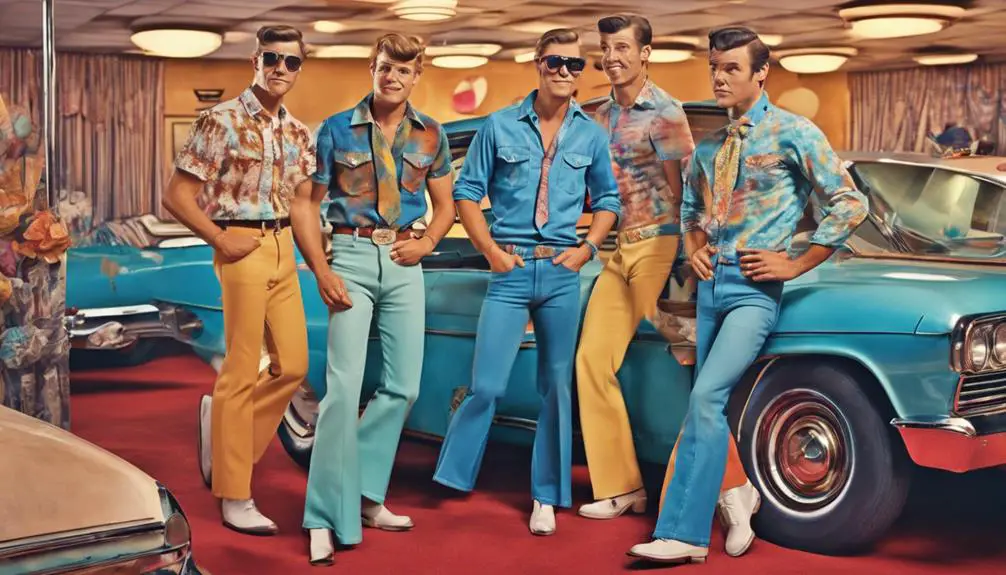
The 1960s revolutionized denim styles, marking a significant shift in how jeans were perceived and worn. During this decade, you witnessed the emergence of iconic cuts like the boot cut and bell bottoms. The bootcut 517™ jean became a favorite for its compatibility with boots, providing a full fit from the knee down that catered to both style and practicality. This design allowed you to embrace a rugged yet fashionable look, aligning perfectly with the decade's spirit of rebellion. Additionally, a growing interest in vintage clothing saw many turning to vintage clothing labels for unique pieces that reflected their individuality.
Conversely, bell-bottoms took the fashion scene by storm, particularly with the launch of the 646 Bell Bottom in 1969. Known for their flattering fit and unique silhouette, bell-bottoms reflected a growing desire for individuality in clothing. Crafted from pre-shrunk cotton, these jeans not only showcased innovative fabric technology but also embodied the counter-culture movements influencing the era.
As you explored these denim styles, you couldn't ignore their cultural implications. They symbolized a break from traditional norms, allowing for DIY modifications like unfinished hems and patchwork designs. Ultimately, the evolution of denim in the 1960s mirrored broader societal changes, making jeans a canvas for personal expression.
Iconic Brands of the Era
Throughout the 1960s, several iconic brands emerged, each playing a pivotal role in shaping the denim landscape. Levi's stood at the forefront, introducing the legendary 501® jean, which became a symbol of counter-culture and self-expression. The Big E tag on these vintage jeans is a mark of authenticity that collectors still covet today.
Meanwhile, Wrangler made waves with its bell-bottom jeans, a style that captured the relaxed vibes of the late 1960s. These denim jeans were not just a fashion statement but a reflection of evolving societal norms. Lee also gained traction with its Black Gold Label selvedge jeans, noted for their durability and quality, appealing to both working-class individuals and style-conscious consumers.
In 1969, Levi's launched the 646 Bell Bottom jeans, which quickly became a staple of the decade's fashion. Their flattering fit resonated with the rising counter-culture movement, allowing wearers to express their identity through fashion. Each brand contributed uniquely to the denim revolution, making the 1960s a defining era for vintage jeans that continue to influence today's styles.
Cultural Impact on Fashion
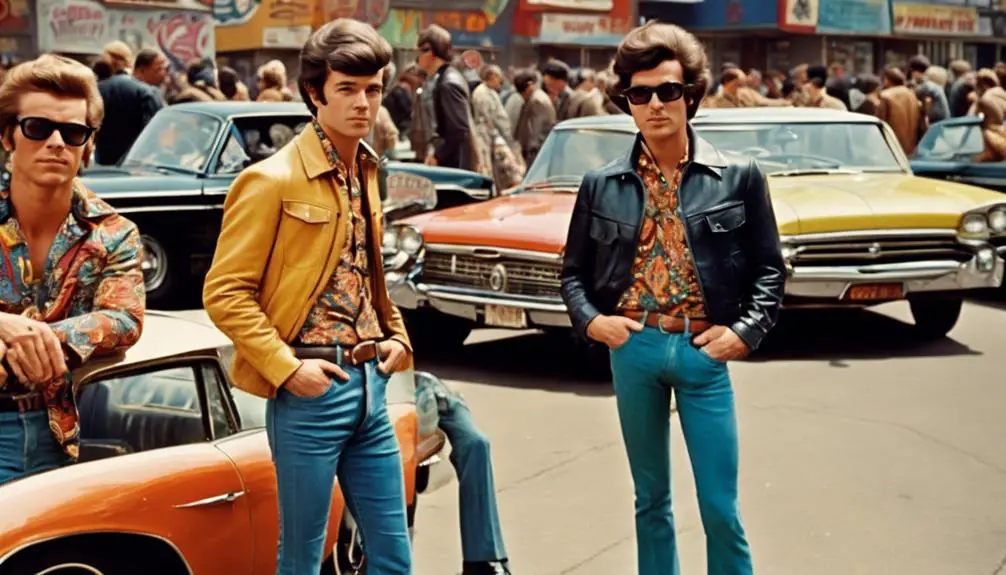
Denim emerged in the 1960s as more than just a fabric; it became a powerful symbol of rebellion and individuality. As counter-culture movements gained momentum, styles like bootcut and bell-bottom jeans became essential expressions of protest and self-identity. You can see how the socio-political landscape shaped fashion choices, with denim reflecting the era's spirit of dissent.
The introduction of the Levi's 517 Boot Cut Jean in 1969 marked a pivotal shift, catering to the trend of pairing jeans with boots. This shift highlighted not just a change in fashion but also functionality—denim was becoming a versatile staple in your wardrobe. Meanwhile, the rise of modified denim, featuring patched and DIY styles, emphasized personal expression and anti-establishment sentiments.
These styles didn't just disappear; they left a lasting legacy. Today, you'll find that denim trends from the 1960s, especially the iconic bell bottoms, continue to influence modern vintage clothing. This connection underscores how a simple fabric transformed into a cultural phenomenon, shaping not only the fashion of its time but also leaving an indelible mark on contemporary style.
Popular Features and Trends
In the vibrant landscape of the 1960s, popular features and trends in men's jeans reflected the era's spirit of innovation and self-expression. Bell-bottom jeans emerged as a defining style, with brands like Levi's introducing models such as the 646. This design quickly became a symbol of the counter-culture movement, allowing you to embrace a more relaxed, rebellious aesthetic. Alongside bell-bottoms, bootcut jeans made their debut in 1969, specifically tailored to fit over boots, showcasing a full cut from the knee down that became a staple in vintage wardrobes.
Distinctive features of 1960s jeans included high rises and wide leg openings, often adorned with unique embellishments and bold patterns that captured the decade's energetic vibe. You might also notice the growing trend of DIY fashion, where customization flourished. Many embraced unfinished hems and personalized patches, creating one-of-a-kind pieces that spoke to individual identity.
As casual and colorful styles permeated the fabric of the decade, the introduction of Levi's orange tab signified a shift toward more playful denim options, particularly for women, yet it influenced men's fashion as well. Jeans during this time weren't just clothing; they were a canvas for personal expression.
Pricing and Market Dynamics
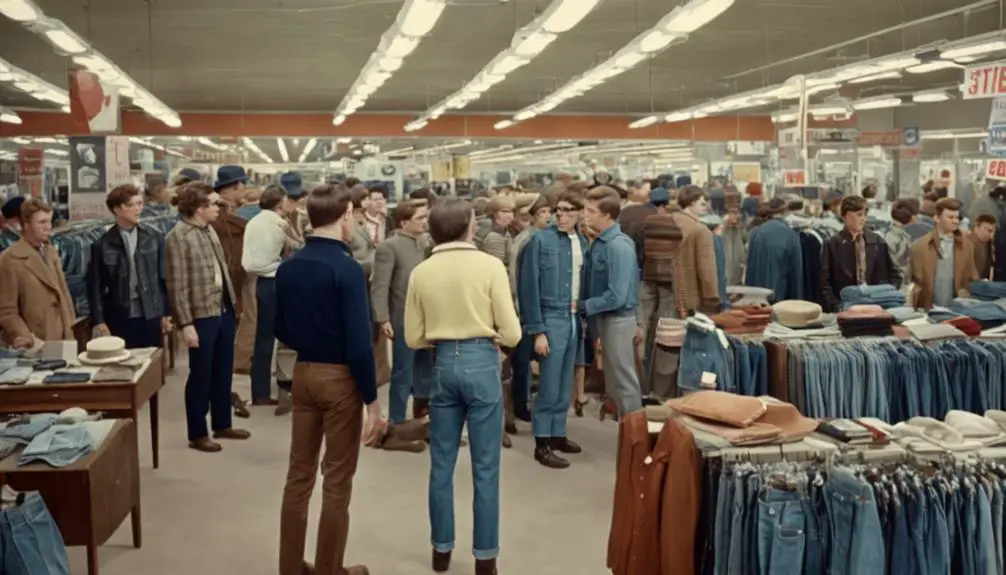
As the 1960s unfolded, the pricing and market dynamics of men's jeans began to reflect the decade's cultural shifts and consumer desires. You'd notice that vintage Levi's, particularly the iconic 501 models with the Big E label, commanded prices ranging from $50 for basic styles to over $1,500 for rare, distressed versions. This variation highlighted the growing demand for unique denim pieces.
- The introduction of the Levi's 517 Boot Cut and 646 Bell Bottom in 1969 showcased evolving fashion trends, with new jeans typically priced between $25 and $100.
- Wrangler and Lee provided competitive pricing, with 60s Wrangler bell bottoms costing around $29.99, appealing to budget-conscious buyers.
- The 1960s Stars and Stripes Hip Huggers, priced at $125, indicated a willingness to invest in fashionable, distinctive denim.
- High-quality raw denim saw premium pricing, with brands costing between $130 and $150, reflecting an appreciation for craftsmanship.
- The era's jeans market was characterized by a blend of affordability and premium offerings, catering to diverse consumer preferences.
This intricate pricing landscape reveals how fashion and cultural identity intertwined during this transformative decade.
Notable Denim Types
Fashion innovation thrived in the 1960s, with notable denim types reflecting the era's dynamic spirit and cultural shifts. You'd see a variety of styles emerging, each telling a different story about the times. The introduction of bootcut jeans, particularly the Levi's 517™ Boot Cut Jean in 1969, showcased a full fit from the knee down, perfect for pairing with boots. Similarly, bell bottoms, epitomized by the Levi's 646 Bell Bottom, became a staple, constructed from pre-shrunk cotton for a flattering fit.
The emergence of the orange tab by Levi's marked a pivotal moment, steering women's jeans toward more fashion-centric designs. Vintage Levi's 501 jeans, especially the Big E versions, were coveted for their durability and classic silhouette, symbolizing rebellion. DIY fashion also took hold, with enthusiasts customizing denim through unfinished hems and patchwork, showcasing personal style and creativity.
Here's a quick overview of notable denim types:
| Denim Type | Key Features | Year Introduced |
|---|---|---|
| Bootcut Jeans | Full fit from the knee down | 1969 |
| Bell Bottoms | Flattering fit, pre-shrunk cotton | 1969 |
| Orange Tab Jeans | Fashion-oriented designs | Late 1960s |
| Vintage 501 | Classic silhouette, durable | 1960s |
| DIY Denim | Customized styles, personal expression | 1960s |
Care and Maintenance Tips

Caring for your denim is essential to preserving its unique character and longevity. The way you maintain your jeans can greatly impact their fit and appearance over time. Here are some valuable tips to keep your denim looking sharp:
- Avoid washing raw denim for at least six months to develop a personalized fit and fading.
- Consider dry cleaning as an alternative to regular washing; it minimizes shrinkage and protects the fabric.
- Use soaking techniques when washing is necessary, enhancing comfort without risking excessive fading or damage.
- Line dry your jeans instead of using a machine; this helps maintain stiffness and prolongs their lifespan.
- Embrace regular wear as it contributes to the break-in process, allowing the denim to mold to your body for improved comfort.
Frequently Asked Questions
What Jeans Were Popular in the 60s?
In the 60s, you'd notice bell-bottoms, bootcut styles, and the iconic Levi's 501s. Each represented a cultural shift, blending practicality with fashion, as counter-culture movements embraced denim as a symbol of rebellion and individuality.
What Year Did Men Start Wearing Jeans?
You'll find that men started wearing jeans considerably in the 1950s, influenced by pop culture. This shift marked jeans' transformation from practical workwear to a fashionable choice, paving the way for broader acceptance in subsequent decades.
Did People Wear Ripped Jeans in the 60s?
You might find that ripped jeans weren't mainstream in the 1960s. However, counter-cultures embraced DIY fashion, allowing some individuals to express rebellion and personal style through distressed denim, paving the way for future trends.
What Type of Jeans Should a 60 Year Old Man Wear?
You should consider classic styles like Levi's 501 jeans for a timeless fit. Opt for relaxed or straight leg cuts, ensuring comfort and ease, while softer denim enhances wearability throughout your day.
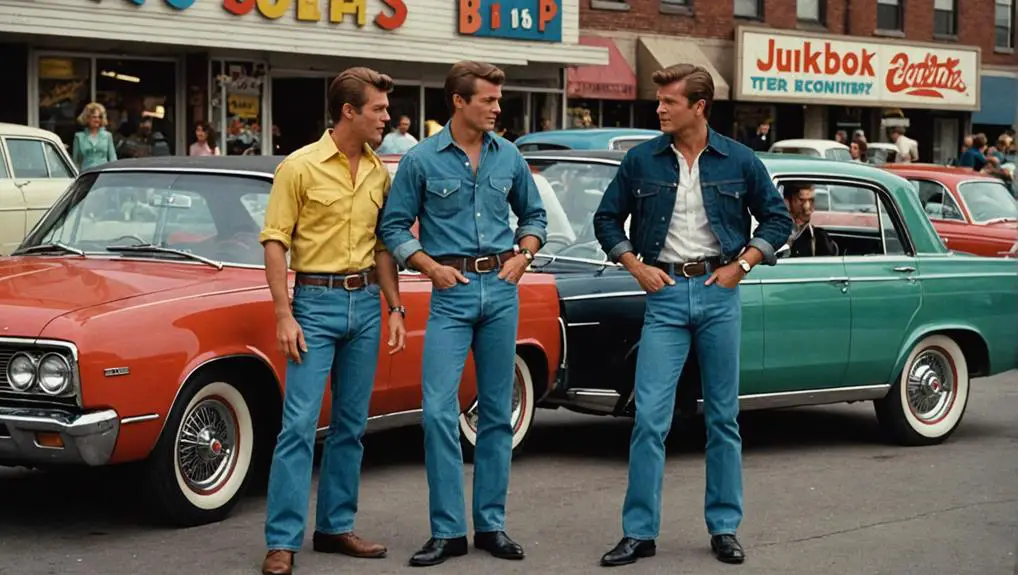


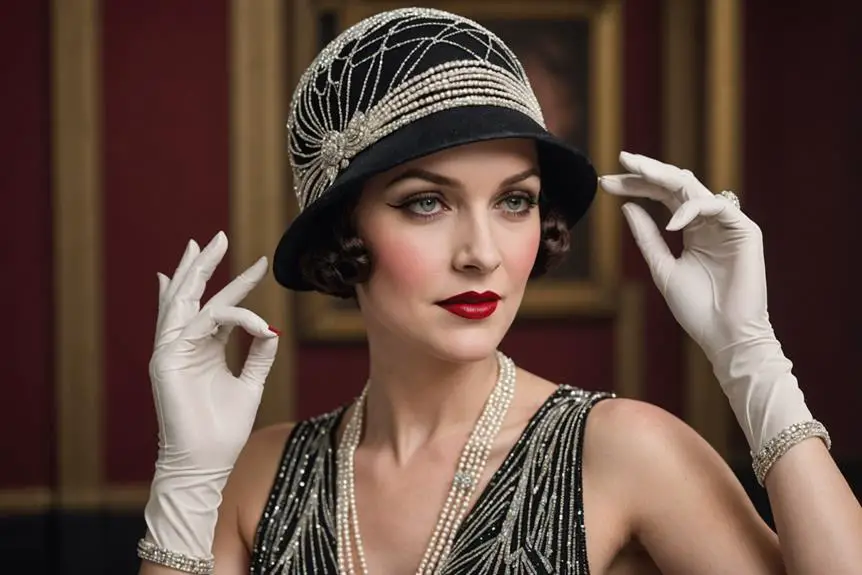
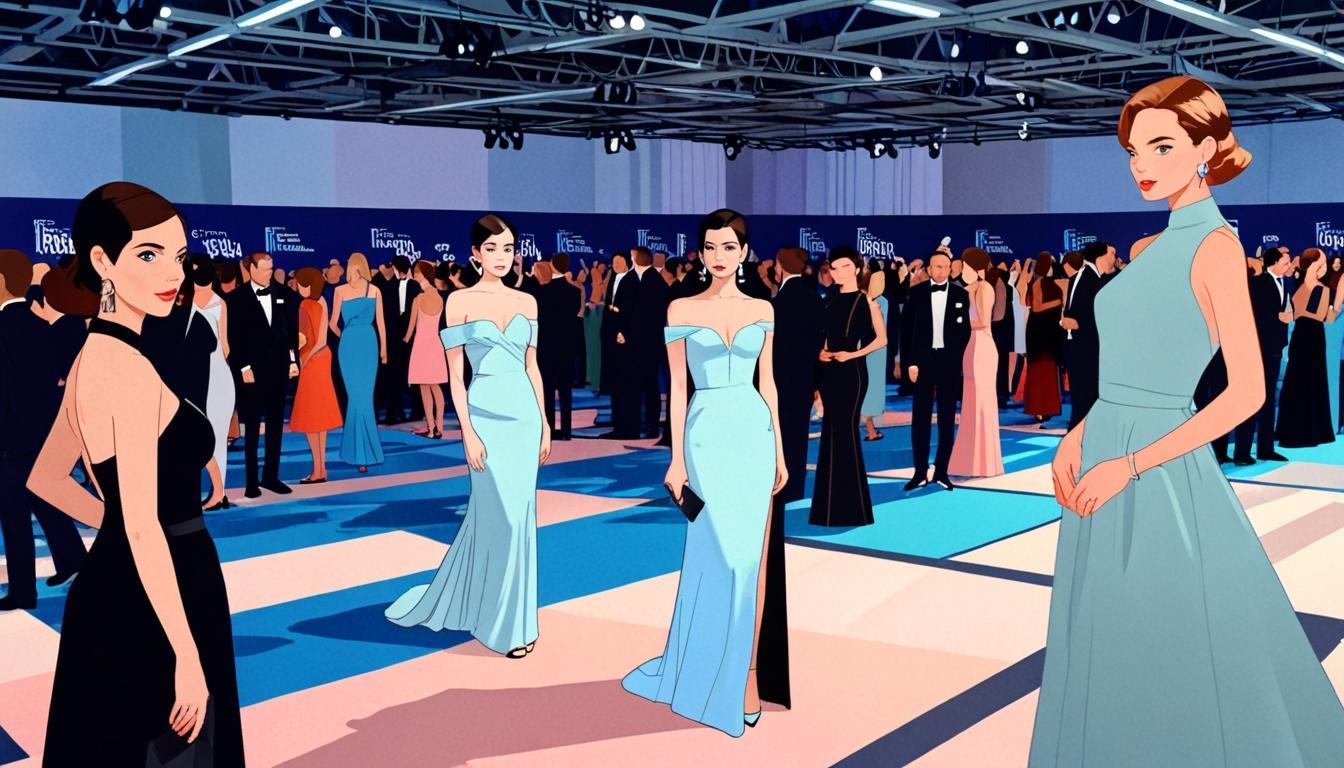
One Comment